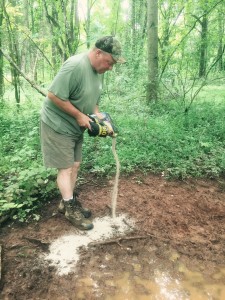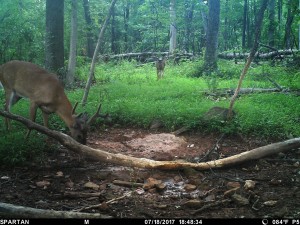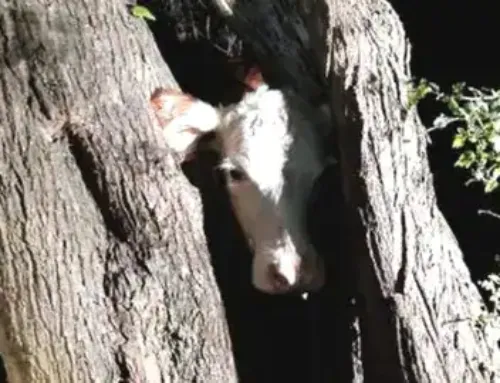 Mineral sites or “licks” provide hubs for your trail cameras and allow you to gain critical intel on bucks for months. You take pictures and watch them grow all summer, which is fun, and you start to pattern and narrow their movements as bow season approaches later toward fall.
Mineral sites or “licks” provide hubs for your trail cameras and allow you to gain critical intel on bucks for months. You take pictures and watch them grow all summer, which is fun, and you start to pattern and narrow their movements as bow season approaches later toward fall.
On one of the farms I hunt in Virginia, my friend Jack and I have 8 licks scattered across 800 acres of woods. About 1 strategically placed mineral site for every 100 acres is about right.
We normally begin lining these sites with minerals sometime in May, and the deer visit them immediately. The bucks on this farm know where the licks are and have been hitting them regularly for years. But anywhere you make a new lick, deer will find it rather quickly.
Right now, in June when the bucks’ new antlers are starting to grow fast and show, we get serious with our mineral-and-camera game.
This week we’ll start running trail cameras at all our licks, and keep them rolling through mid-August, when mineral usage by deer tends to slow. During the next 2 months we’ll get thousands of deer images–almost too many!
Immediately we can see what kind of rack year it is shaping up to be, which is something every hunter wants and needs to know. We wade through the picture mountain of does and young bucks and start focusing on the mature deer. Any thick 8- or 10-pointer that looks to be growing to the 130-class catches our eye, and we really hone in on the odd buck in the 140 to 150 range.
We start making notes on the big deer we’ve located at our licks, and the days, times and locations of their travels. We cross-reference those notes with a huge aerial photo of the property tacked on the camp wall and voila, the patterns of the bucks and where to hunt them begin to come into focus.
How to Build a Mineral Lick
The experts at Anilogics say the ideal time to establish a new mineral site is early spring, but if you’re just getting around to it now worries. Deer will hit your sites hard for the next 2 to 3 summer months.
Locate your licks strategically. The corners and edges of crop fields and food plots are good spots, especially where thick cover is nearby. All our licks are fairly close to main deer trails, where bucks can veer over to check them with minimal effort. Two of our best sites are near creek crossings back in the woods.
Look for a flat spot with a good tree for a camera within 12 to 15 feet. Clear a spot six to eight feet in diameter, and rake away the old leaves and grass down to bare soil.
Clay soil is best because it binds and holds the minerals longer. If the soil is super sandy where you hunt, you might want to find some clay or denser dirt and mix it in the lick.
Through years of trial and error we’ve found that our deer prefer loose minerals over blocks. We’ve tried many brands and have the best luck with Mineral Dirt 180. The deer here in the Virginia Piedmont love it and flock to it in summer. You should experiment with several brands of minerals to see which deer prefer in your location.
Apply and scatter a coat of loose minerals around a site—there is no set amount, sometimes we use a whole bag, especially during the first freshening of early summer. Sometimes we mix the minerals into the dirt with a rake or boot, sometimes not. It doesn’t seem to affect site usage by our deer either way.
We refresh our licks with a new application of minerals once every 3 or 4 weeks; I have friends that do it once every 2 weeks. If and when a trail camera reveals that noticeably fewer deer are showing up at a lick, time to refresh it. We run Spartan Go Cams at many or our sites, so they are easy to monitor from afar on our phone apps.
It is fun to watch how the most active sites grow. As deer dig for the minerals, the holes get bigger and deeper. We have a couple of years-old licks deep enough to hide half a buck!
Let me end with this important note. Here in Virginia, using minerals is legal during spring and summer, but not permitted from September 1 through the end of hunting season. State laws on using minerals and attractants vary across America, so check your game regulations carefully.








Good stuff Mike! I always set up cameras on our mineral sites as well and can get a good idea of what kind of deer are hanging around each summer. This years its illegal in our area to use mineral due to the CWD that has hit the last couple years. Will try to beef up the food plot and see how that works.